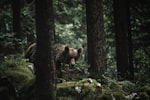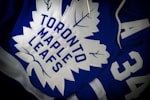"History is written by the victors." - Winston Churchill
(Not everything I write will come from Holzman and Nieforth's Deceptions and Doublecross: How the NHL Conquered Hockey - actually, quite a bit doesn't (save for these last couple installments) - but it's a good bet that this book will have influenced it. Seriously - go get a copy and read it. It's good. Wikipedia is also your friend.)
----
Heading into 1918-19, the NHA was in almost the exact same place it had been a year earlier.
The NHA, of course, hadn't really ceased to exist when the NHL was formed. They simply hadn't played. The NHA still had a lawsuit before the courts with respect to the $3000 bond that they wanted to claim from the 228th Battalion. If the league disbanded, this would be lost. They continued to hold meetings, attended by representatives of each team. This included the Wanderers, who had otherwise ceased to exist after their arena had burned down, and the Blueshirts - still run by Livingstone.
The NHL was never meant to be the permanent league. The NHA was supposed to be back in business once Eddie Livingstone had sold off to someone easier to deal with (read: someone who wouldn't call the other owners out on their misbehaviour - perhaps the Montreal-based owners of the Arena Gardens). Once that happened, they could fold the new league, go back to being the NHA and everything would be sunshine and roses.
And yet here they were. Livingstone hadn't gone away. He still owned the Blueshirts, the one-year lease agreeement with the Arena Gardens was over and the NHA had itself a problem - well, a couple of them. These were new ones to go on top of those they already had.
First, the Arena Gardens had made a pretty tidy sum of money by virtue of having a championship team in 1917-18. Unfortunately, Livingstone was due a portion of that and as per usual the Arena was in no hurry to pay it. Even Ottawa's Tommy Gorman made a conservative estimate that Livvy was due as much as $9000 for the past season - and that didn't even count the wildly lucrative playoff run. The arena offered just under $6000, contingent on Livingstone releasing them from all future obligations. Livingstone instead filed suit for $20000.
Second, the Arena Gardens people (Charlie Querrie in particular) found that they rather liked running a championship hockey team. They wanted to keep it, though not in any manner that would involve giving Livingstone any real money. The lease agreement was rather unlikely to be renewed, particularly given that they didn't want to pay up for the previous year's lease.
Though they did make a nominal offer for the team and players, their preferred solution was to simply declare Livingstone's ownership of player contracts as null and void, sign the players themselves and let the chips fall where they may. In the end, this is what they did. They wanted the team, so they took it.
They mitigated their risk by spinning off the hockey team, making it and the arena distinct businesses. This was done just in case Livingstone actually won his lawsuits. If he did, it was feared he could gain control of the arena as part of the damages.
The new entity was the Toronto Arena Hockey Club. Holzman and Nieforth draw particular attention to this point, as it means that the winning team on the Stanley Cup is incorrectly named for 1917-18. That team was really the Toronto Blueshirts (/Toronto HC), leased to the Arena Gardens.
Livingstone was by this time seriously pursuing some options of his own. He intended to get his own league up and running (either that or resurrect the NHA under new management), tap some of the American markets and outcompete the NHL. For the most part, the NHL outflanked him at every turn as they managed to gain control of all the major ice sheets, even those to which Livingstone's new league had all the legal rights. He'd spend years trying to get that rival league in place, but it never would come to fruition.
On the issue of players, the NHL took the curious position that Livingstone's players were simply NHL property now and that the existing option clauses in their contracts (sort of a variation on the reserve clause) were null and void, basically for no reason other than the NHL decided that they should be. The Habs George Kennedy would float this particular notion. It would prove to hold surprisingly little water with the courts.
The players themselves basically wanted to be paid, and once it became clear that Livingstone had no ice, they signed with Querrie and the Arenas. Livingstone would sue for damages based on the loss of his players and his franchise, but he would never have direct control of them again. His ownership of the Blueshirts was effectively over.
----
The story goes on a long, long way from here, with no shortage of twists and turns, but this is where I am going to stop it. I had wanted to talk about Eddie Livingstone and the Blueshirts and how they came to be booted from the common memory, and my original estimate of six or seven posts turned out to be short by about 14.
The story of Livingstone vs. the NHL (in general) and Calder (in particular) continues into the early 1930s. Much of 1918-19 was consumed by lawsuits, and the Arenas were a mess. Players were being called as witnesses and the team was falling apart - losing game after game and not even drawing flies. They really didn't finish the season and were quickly dissolved and reorganized into the St. Patricks with a new ownership group that still included Querrie.
When you look at it the first decade of the NHL, the prime activity of NHL owners in Toronto was the finding of novel ways of building legal firewalls. They hoped to protect themselves and limit the potential for damages to be paid to Livingstone, particularly damages that could get him control of the team again. The objective was to leave Livingstone with nothing to sue, or let him win damages from businesses that had ceased to exist.
And Livingstone did win damages - lots of them. The traditional storyline is that by leaving his NHA team intact in a one-team league, Livingstone had nothing to sue for. In the context of that one original case, this is correct. But in his lawsuits about the failure to pay debts and the theft of his player contracts, he won and won handily. In one instance, the judge called the Arena Gardens representatives and Querrie "despicable and dishonest" and lamented that he couldn't find legal grounds to fine them more than he was fining them.
The NHL was ordered to return all player contracts to Livingstone, though they never seemed to get around to that. In his various suits, he was awarded tens of thousands of dollars, and in one judgement (that was later reduced), he got an even $100,000 - an enormous sum of money in those days.
His problem, as one would suspect given the behaviour of those he was suing, was in collecting. This took years and years as every judgement went through a series of appeals and revisions. Livingstone never gave up on it though.
The last of the judgements was rendered in 1926. In order to meet them, Charlie Querrie was forced to finally sell his share of the St. Patricks to a local sportsman who had been turfed as the GM of the Rangers - Conn Smythe.
(As an aside, another informational treat from H&N is this - the notion of renaming the St. Pats as the Maple Leafs wasn't an invention of Conn Smythe. Querrie had been looking at it months earlier, thinking maybe to draw from the success of the baseball Maple Leafs. Conn Smythe may well have looked to the Maple Leaf Regiment, but in the end he simply carried out something that was already underway.)
Though the telling of this story has taken a lot more text than I would have thought, it covers only a fraction of the history told in Deceptions and Doublecross. Even the portions I have told are described in far, far more detail in the book.
The saga goes on to cover Livingstone's attempted leagues, a coup within the Senators organization, the birth and demise of the Hamilton Tigers, the war with the (now) American Hockey League, the end of the western leagues, American NHL expansion and the increasingly iron-fisted rule of Frank Calder. All along the way, Livingstone is there. Much of what we have come to see as today's North American hockey world has come from the battle between Calder and Livingstone and its aftermath. It's a shame it isn't better understood.
As such, I suggest again to everyone to get your hands on a copy of this book. Go buy one, or else ask for it for Christmas or some other occasion. It's a great read and you'll never look at things the same way again. I've read the whole thing three times and select parts seven or eight and I still can't get over the way in which things went down. I thank them for writing it and for coming here from time to time to comment. I hope this series has done something in terms of bringing their work to people's attention. It's truly exemplary and deserves all the attention it can get.
Next - some last thoughts on karma and other random things.



